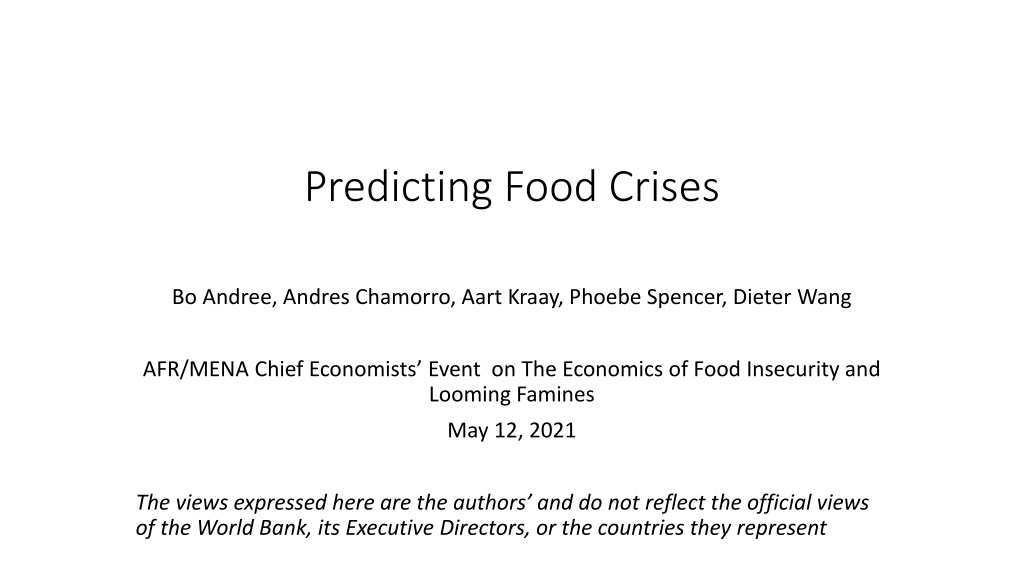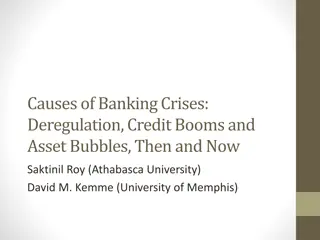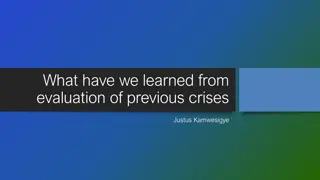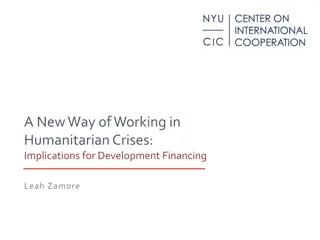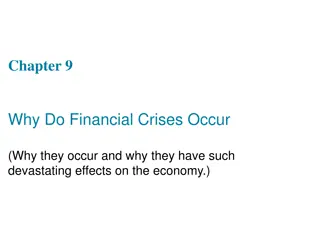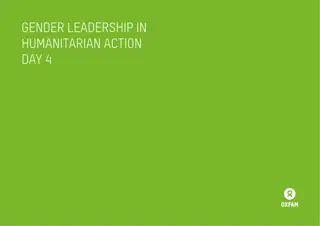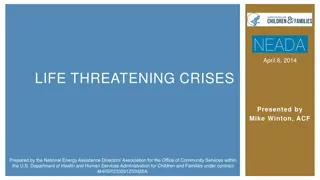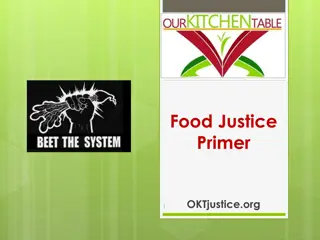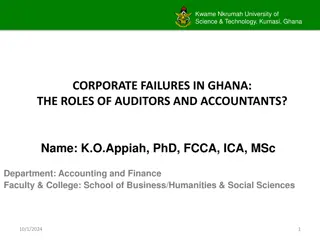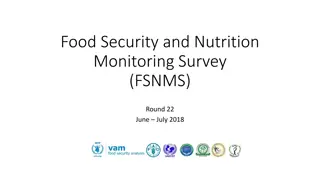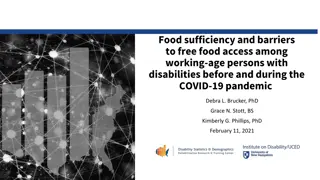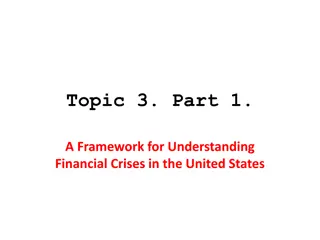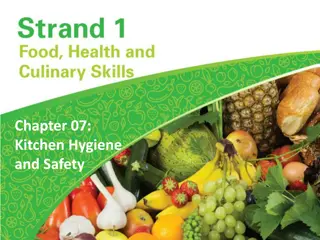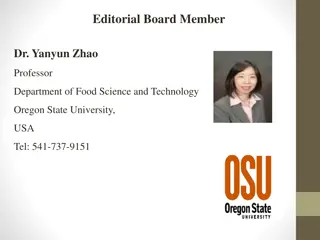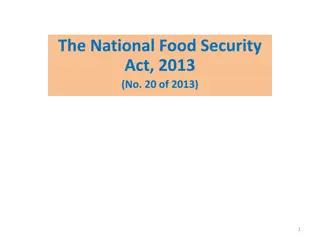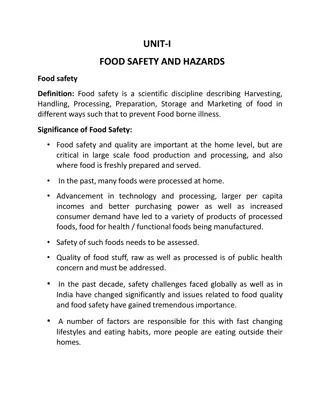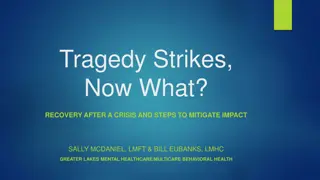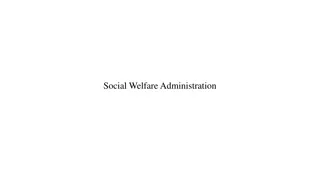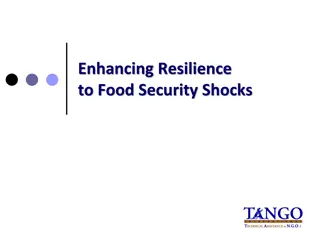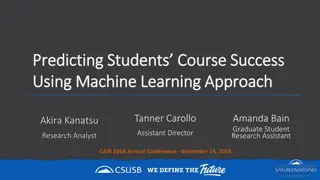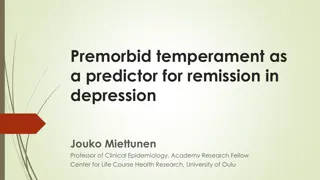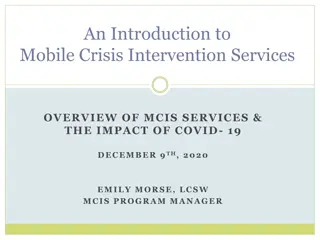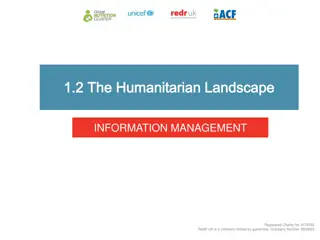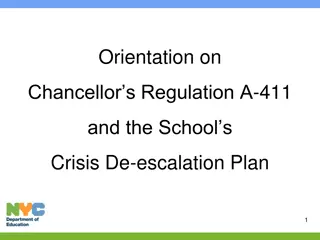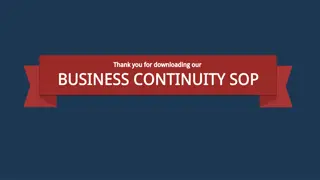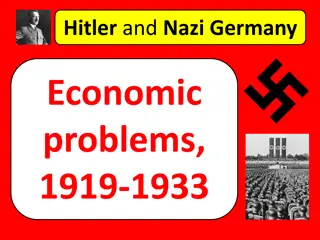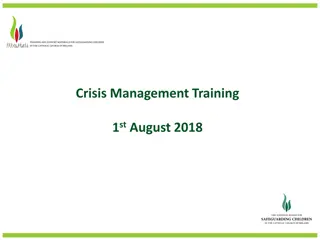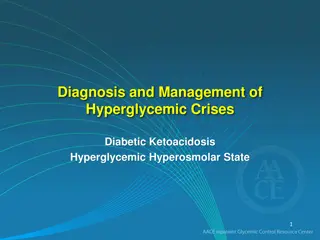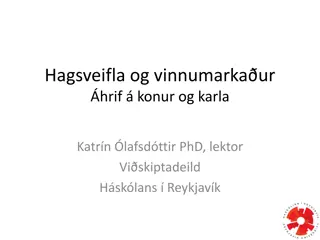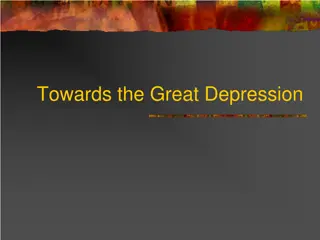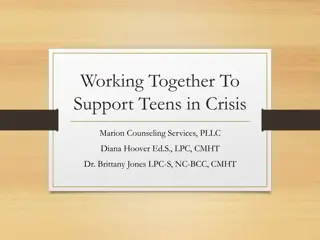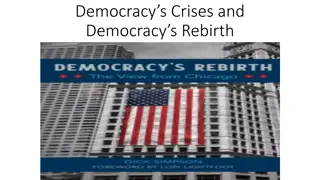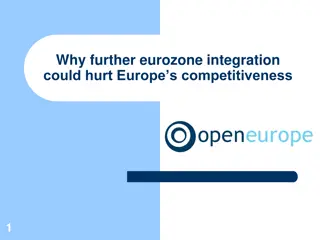Predicting Food Crises: A Comprehensive Analysis
Food insecurity is a significant issue, especially in developing regions like Africa, exacerbated by factors such as climate change and population growth. Despite the importance of early prevention, there is limited literature on predicting food crises, unlike conflict outbreaks. This study by Bo Andree, Andres Chamorro, Aart Kraay, Phoebe Spencer, and Dieter Wang focuses on creating predictive models for food insecurity events using high-frequency predictors like weather, conflict, and prices. The goal is to improve early warning systems to unlock financing for humanitarian responses. The analysis leverages monitoring data from FEWS.NET across 21 countries to predict transitions into food crises, highlighting the need for accurate predictions to mitigate the impacts of food insecurity.
Uploaded on Sep 30, 2024 | 0 Views
Download Presentation

Please find below an Image/Link to download the presentation.
The content on the website is provided AS IS for your information and personal use only. It may not be sold, licensed, or shared on other websites without obtaining consent from the author. Download presentation by click this link. If you encounter any issues during the download, it is possible that the publisher has removed the file from their server.
E N D
Presentation Transcript
Predicting Food Crises Bo Andree, Andres Chamorro, Aart Kraay, Phoebe Spencer, Dieter Wang AFR/MENA Chief Economists Event on The Economics of Food Insecurity and Looming Famines May 12, 2021 The views expressed here are the authors and do not reflect the official views of the World Bank, its Executive Directors, or the countries they represent
Motivation Food insecurity is widespread in many countries, particularly in Africa Growing populations and climate change may add to the problem, particularly in poor places. Early preventive action to avoid food crises has high returns, but realizing these returns requires robust early warning of food insecurity to unlock financing for humanitarian response Surprisingly there is very little literature on predicting outbreaks of food insecurity In contrast, vast literature predicting outbreaks of conflict 2
Desirable attributes of a prediction model Good predictions in a non-trivial way recognizing low frequency of food crisis events (the stopped-clock problem in spades!) High-frequency predictors to enable high-frequency predictions (even if food insecurity itself is less-frequently measured) Interpretable outputs not just where and when but also why Moral hazard resistant to increase credibility of policy and financing responses triggered by predictions 4
What we do Predict transitions into food insecurityin 1,162 districts across 21 countries monitored by FEWS NET. Rely on a parsimonious set of high-frequency predictors in three buckets: 1. weather, 2. conflict, 3. prices, plus fixed factors Optimize predictions for given preferences over false negatives (fail to predict crisis when crisis occurs) and false positives (predict crisis when no crisis occurs) Evaluate predictive performance of alternative models simple econometric do better than expert judgment, returns to complexifying econometric models are small 5
Predicting transitions into food crises FEWS NET monitoring data for 21 countries; every 3-4 months; unbalanced panel 2009-2020; subnational detail overlayed to admin- 2 districts for analysis Transition into food crisis defined as transition from IPC(1,2) to IPC(3,4,5) These are rare events: just 1723/37918=4.5 percent of observations correspond to an outbreak of food crisis But they are prolonged: typical outbreak last 3-4 FEWS NET reporting periods or 1-1.5 years 6
Predictors Three main buckets of high-frequency (monthly) predictors Weather: satellite imagery for rainfall, evapotranspiration, NDVI Conflict: ACLED high-frequency event monitoring Food Prices: food price inflation based on (noisy!) local market data from WHO Also fixed attributes of districts (size, remoteness, ruggedness, etc.) Anchored in literature on economics of famines: Famines arise from severe aperiodic market and institutional failures in economies under stress (Ravallion, 1997) Two key features of predictor set: High-frequency to enable high-frequency predictions Arms-length measurement for moral-hazard-proof predictions (note also absence of lagged dependent variables) 8
Defining success Prediction models are optimized to minimize prediction loss function: ? ????? ???????? ???? + 1 ? ????? ???????? ???? Choice of ? is very important not just for the nerds! False Negatives: failure to predict food crisis has high humanitarian cost as well as missed opportunities for prevention/mitigation False Positives: misallocation of scarce crisis response resources as well as risk of donor fatigue Illustrative choices:? =1 3 3,1 2,2 Technical details Minimize out-of-sample prediction errors based on k-fold cross-validation Minimize continuous analog of prediction loss function (weighted log-loss) Baseline predictive model is a relatively simple random forest 9
How do we do? Predictive Performance -- 12 Months Ahead 100 90 Random Forest 80 False Positive Rate 70 60 50 40 30 20 10 0 0 20 40 60 80 100 False Negative Rate 10
How do we do? Predictive Performance -- 12 Months Ahead 100 90 Random Forest Logit 80 False Positive Rate 70 60 50 40 30 20 10 0 0 20 40 60 80 100 False Negative Rate 11
How do we do? Predictive Performance -- 12 Months Ahead 100 Random Forest Logit Neural Network 90 80 False Positive Rate 70 60 50 40 30 20 10 0 0 20 40 60 80 100 False Negative Rate 12
How do we do? Predictive Performance -- 12 Months Ahead 100 FEWS NET Random Forest Logit Neural Network 80 False Positive Rate 60 40 20 0 0 20 40 60 80 100 False Negative Rate 13
Policy Context Started this work in context of Famine Action Mechanism (FAM) initiative to inform efforts around two potential use cases focused on early/preventative action 1. IDA Crisis Response Window (CRW) potential for a mechanism to trigger early and quick release of IDA resources in anticipation of food insecurity events (not after the fact) 2. Eventually, market-based risk transfer mechanism that triggers payouts when risk of anticipated future food insecurity is high (hence concern with moral hazard, basis risk) 15
